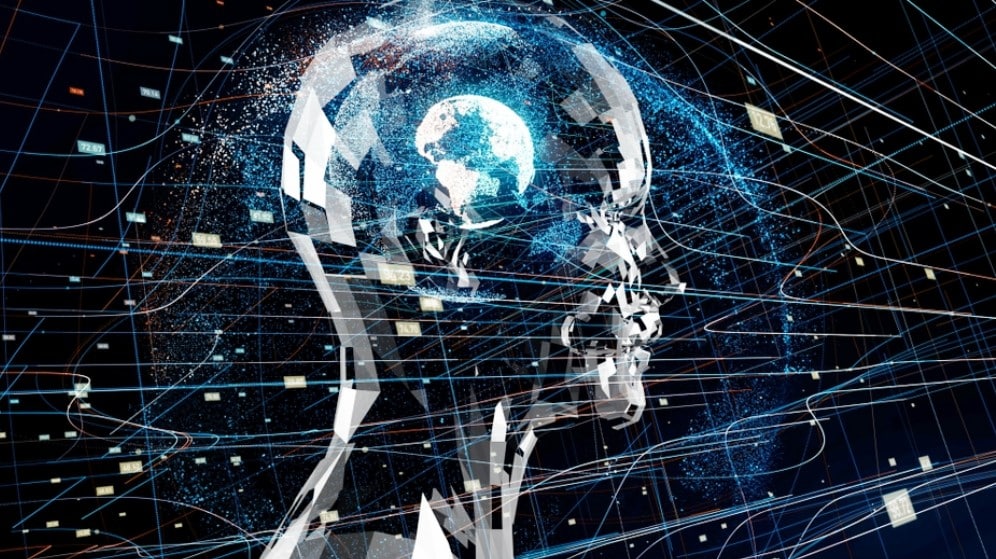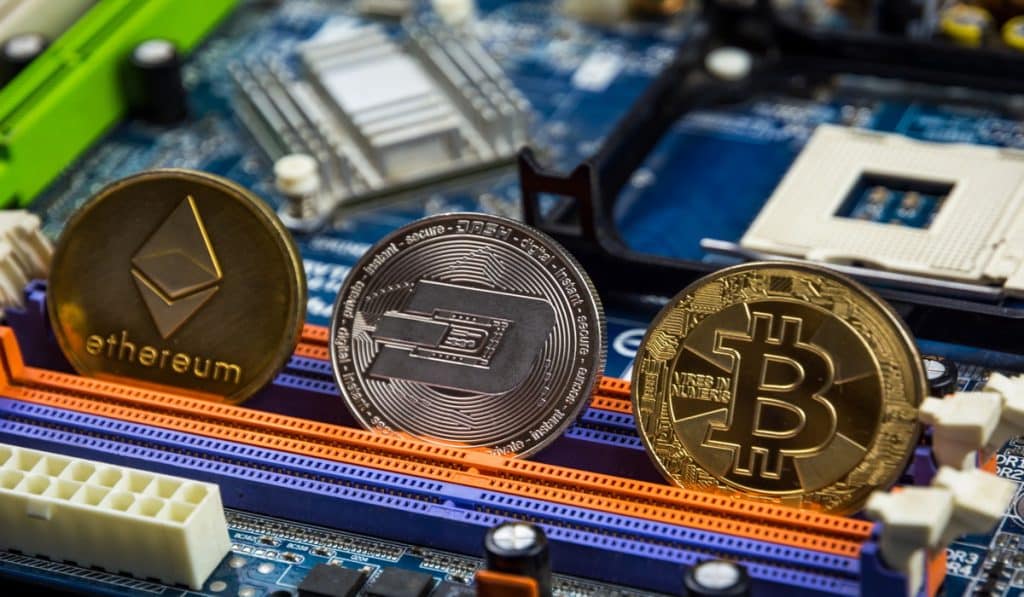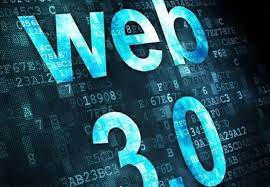What Is Web3? Beginner’s Guide To Web3 Technology
The digital landscape is ever-changing, and one new buzzword that’s currently making waves is Web3 technology. The following article is an in-depth guide that will explore Web3’s core concepts, applications, and its potential impact on society’s internet use. The aim of this article is to demystify Web3 and shed light on its significance in the tech universe. Web3 represents a profound transformation in the digital world, driven by a set of core principles. These principles, including decentralization, trustworthiness, user empowerment, transparency, ownership and data control, inclusivity, innovation, privacy, reduced centralization, and open-source collaboration, fundamentally reshape our online interactions. They empower individuals and communities, fostering a decentralized, user-centric, and fair digital environment in the modern age.
We have created this in-depth guide to help our readers better understand the exciting web3 landscape. As more and more institutions begin to adopt web3, understanding the technology could be a vital component of navigating the markets with confidence. Our team of expert writers used a variety of trustworthy articles, original research, and informative guides to create a comprehensive guide to web3.
-
-
Web3 in a Nutshell
Web3 isn’t just a tech upgrade; it’s a major shift in how users use the internet. At its core, Web3 is about decentralization, increased user control, and redefining the Internet as a more equitable and user-centric space. Web3 is a response to the limitations and drawbacks of the current internet landscape, often referred to as Web2. In the Web2 era, tech giants and centralized platforms held significant power over our digital lives. They collected and controlled vast amounts of user data, controlled the flow of information, and often made decisions that impacted users without their direct input. Web3 flips this script. It’s a movement towards decentralization, giving control back to individual users and smaller communities. It envisions an internet where power and decision-making are distributed among participants rather than concentrated in the hands of a few corporate entities. One of Web3’s fundamental principles is trustlessness, achieved through technologies like blockchain. Trustlessness means that users can engage in digital transactions and interactions without needing to rely on intermediaries or central authorities. This enhances security, transparency, and fairness in the digital realm.
What Is Web 3.0?
Web 3.0, commonly known as Web3, signifies the next pivotal phase in the internet’s development. To grasp the essence of Web3, it’s essential to draw a comparison with its predecessor, Web2. In the era of Web2, characterized as the internet’s second phase, centralized platforms and tech giants took center stage. Companies like Facebook, Google, and Amazon wielded significant influence. They amassed and controlled extensive user data while serving as intermediaries for various online activities, including social networking, search, and e-commerce.
Conversely, Web3 seeks to break free from the centralization and control that defines Web2. Its goal is to democratize power and control, shifting the focus to individual users and smaller communities. In the Web3 vision, the internet transforms into a decentralized, user-centric, and trustless domain. This entails reducing dependence on corporate giants and affording individuals greater ownership and authority over their digital experiences. This evolution from Web2 to Web3 is a promising event in the open digital landscape and promises to become more equitable.
At its heart, Web3 revolves around reshaping the internet to reduce reliance on major tech corporations, prioritizing principles such as decentralization, user empowerment, and the elimination of intermediaries.
What is Web3 technology?
Web3 technology encompasses several groundbreaking elements that are instrumental in shaping a more decentralized internet. Let’s delve into these vital components:
- Blockchain Technology: At the core of many Web3 applications is blockchain, a distributed ledger system renowned for its security and transparency. Blockchain eliminates the necessity for centralized authorities by providing a secure and transparent record-keeping mechanism. Notably, blockchain is closely associated with cryptocurrencies such as Bitcoin and Ethereum.
- Decentralized Applications (DApps): DApps represent a pivotal facet of Web3, as they are software applications constructed on blockchain infrastructure. DeFi apps operate independently of central servers, relying on a decentralized network of nodes. This decentralized approach minimizes the risk of censorship and central control, ushering in a new era of digital interactions.
- Smart Contracts: Smart contracts are self-executing agreements defined by code, running on blockchain platforms. These contracts automate various aspects of agreements and transactions, ensuring a high degree of trust and transparency in the process.
Together, these Web3 technologies facilitate direct peer-to-peer interactions, empowering users to connect with each other and digital assets, all while reducing the need for intermediaries like traditional social media platforms or conventional banking institutions. This decentralization promotes trust in digital transactions, lessens dependence on intermediaries, and bestows individuals with enhanced control over their digital pursuits, contributing to a more sustainable and equitable online ecosystem.
Decentralization explained
The idea of decentralization stands as a cornerstone concept within Web3 technology, profoundly transforming and influencing the development of the internet and blockchain technology:
Decentralization: Within the realm of Web3, Decentralization signifies a departure from conventional central authorities, including large corporations and governmental bodies, that have historically governed and overseen digital realms. Instead, it champions the utilization of distributed networks where power and control are collectively distributed among numerous participants. A fundamental consequence of decentralization is the empowerment of individual users. In a decentralized system, each participant plays a role in shaping the direction and governance of the network. Users have a say in the decision-making processes and can actively contribute to the network’s development. This empowerment represents a significant shift from the passive roles users typically held in centralized systems.
Transparency
Decentralization ushers in a new era of transparency, achieved through the recording of transactions and interactions on a public ledger, commonly known as a blockchain. These records remain immutable and accessible to all, instilling trust even in the absence of a central governing entity. Perhaps the most striking aspect of transparency in a decentralized system is its ability to foster trust in an environment devoid of a central governing entity. In traditional centralized systems, trust often relies on faith in the actions and integrity of a central authority. However, in a decentralized setting, trust is derived from the verifiable, transparent, and tamper-resistant records on the blockchain. Users no longer need to rely on a central entity’s promises or assurances; instead, they place their trust in the mathematical and cryptographic principles that underpin blockchain technology.
Censorship Resistance
A notable advantage of decentralization is its inherent resistance to censorship. Centralized systems are susceptible to content control and access restriction by central authorities. In contrast, decentralized systems exhibit resilience against censorship attempts, given the absence of a singular entity vested with the authority to curtail or regulate access. Censorship resistance aligns with the broader goal of preserving freedom of expression in the digital age. It enables individuals to share information, express opinions, and engage in open discourse without fear of arbitrary censorship or restrictions.
Elevated Security
The adoption of decentralization often results in heightened security by mitigating single points of failure. Unlike traditional centralized systems, where the compromise of a central server can lead to extensive data breaches, decentralized systems disperse data across multiple nodes, bolstering security considerably. Decentralized systems are inherently more resilient to hacking attempts and data breaches. In traditional centralized systems, a successful breach can potentially compromise the entire dataset. In a decentralized setup, an attacker would need to compromise a substantial portion of the network’s nodes to have a similar impact, a considerably more challenging feat.
Decentralization lies at the core of Web3’s mission to democratize digital spaces, furnishing individuals with greater autonomy and engendering trust in online interactions. This shift toward decentralization represents a significant step toward a more sustainable and equitable digital landscape. decentralization in Web3 is a radical departure from the centralized authorities that historically governed the digital realm. It fosters distributed networks, empowers individuals, enhances transparency, and aligns with the overarching goal of democratizing digital spaces. However, it also brings forth its own set of challenges and considerations, which must be carefully navigated to harness its full potential in reshaping the internet.
Key features of Web 3.0
Web3 brings numerous notable features that distinguish it from its predecessors. These features collectively empower individuals and communities, fostering a more equitable and user-centric digital environment.
Trustlessness: Trustlessness means that Web3 systems and applications don’t require users to trust a central authority. Instead, trust is established through cryptographic algorithms and decentralized consensus mechanisms. This reduces the risk of fraud, corruption, and misuse of power.
Data Ownership: Web3 emphasizes data ownership by individuals. In Web2, tech giants often collected and monetized user data without users having much control. In Web3, users have greater ownership and control over their personal data, deciding who can access it and how it’s used.
Reduced Influence of Tech Giants: One of the main goals of Web3 is to reduce the dominance and influence of tech giants over online activities. By enabling decentralized platforms and applications, Web3 allows users to have more direct control over their online lives, rather than being subject to the rules and policies of a few powerful corporations.
Enhanced Privacy: Web3 strives to enhance user privacy by minimizing the amount of personal information that needs to be shared with third parties. It enables users to transact and interact online with a higher degree of anonymity and security.
What Is Web3 Used For?
Web3 technology is incredibly versatile and finds applications in various domains. It empowers users to engage in peer-to-peer transactions, build decentralized communities, and create new digital economies across a wide range of industries, transforming the way users interact and conduct business online.
Finance: Web3 enables peer-to-peer financial transactions, lending, borrowing, and trading without the need for traditional banks or intermediaries. This platform has revolutionized finance through the creation of cryptocurrencies and decentralized finance (DeFi) platforms.
Gaming: In the gaming industry, players can buy, sell, and trade digital assets securely. Web3 offers ownership of in-game assets, provable scarcity, and new monetization models through blockchain-based play-to-earn games.
Social Networking: Web3 facilitates the creation of decentralized social networks where users have more control over their data and can form communities without relying on a central platform.
Supply Chain and Logistics: Web3’s transparency and traceability features are used to improve supply chain management and reduce fraud in logistics.
Digital Identity: Web3 enables users to have self-sovereign digital identities, reducing reliance on centralized identity providers.
Content Sharing: Web3 platforms can reward content creators more fairly through token-based incentives, challenging the content monopoly of big platforms.
Decentralized Autonomous Organizations (DAOs): Web3 technology is used to create DAOs, which are organizations governed by code and community voting. They can be used for decision-making in various contexts, including governance and investment.
How Does Web3 Work?
Web3 technology operates on the principles of decentralization, cryptography, and consensus mechanisms. The mechanics of Web3 encompass blockchain technology, decentralized applications (DApps), and smart contracts. These components enable peer-to-peer interactions, enhance security and privacy, promote data ownership and control, and foster transparency. Web3 also involves governance models and consensus mechanisms to ensure decentralized decision-making. Challenges like scalability and regulatory concerns are addressed as part of Web3’s ongoing development. Many Web3 applications use tokens, which are digital assets representing ownership or utility. Tokens can represent anything from cryptocurrencies to in-game items, and they are often used to incentivize users and create new digital economies.
What Is The Difference Between Web2 and Web3?
Web3 represents a move from a centralized, top-down approach to a more distributed, user-centric model, challenging the traditional power dynamics of the internet. The comparison between Web2 and Web3 represents not just an evolution, but a profound paradigm shift in the way people conceive and interact with the internet. Web2 thrived on centralized platforms, where tech giants held immense power and controlled data. In contrast, Web3 prioritizes decentralization, giving individuals and communities greater control over their digital experiences. This shift transforms how information is stored, accessed, and governed on the internet, marking a fundamental change in the principles that underpin the digital world.
Web2 (Web 2.0): Web2 was characterized by the dominance of centralized platforms like Facebook, Google, and Amazon. The internet was controlled by a few tech giants, limiting user influence. These platforms acted as intermediaries, controlling information, services, and user data, often monetizing data without user consent.
Web3 (Web 3.0): Web3 focuses on decentralization and user empowerment, utilizing technologies like blockchain. Data is distributed across a network, reducing central authority reliance. Web3 prioritizes transparency, security, and user data control. Users actively participate, transact directly, own data, and use decentralized applications (DApps) without intermediaries, fundamentally altering internet information storage, access, and control.
Pros and Cons of Web 3.0
Understanding the pros and cons is essential for navigating the Web3 landscape responsibly. It highlights the need for ongoing development, responsible adoption, and regulatory frameworks to address emerging challenges.
Pros:
- Increased Security: the current blockchain technology enhances security, making data tamper-proof and reducing fraud risk.
- Ownership: users have more ownership over their data, digital assets, and online identities, presenting users with more control.
- Reduced Monopoly: challenges big tech monopolies, fostering competition and reducing corporate power.
- Global Accessibility: this platform provides services to underserved populations worldwide, accessible with an internet connection.
Cons:
- Scalability: Some Web3 platforms face slow transaction processing and higher fees, hindering mainstream adoption.
- Responsibility: Users must secure private keys and understand complex smart contracts, as errors can lead to irreversible losses.
- Regulation: Decentralization poses regulatory challenges, leading to uncertainty and legal issues.
How Will Web3 Affect The Way We Use The Internet?
Web3 transforms the internet into a user-centric, decentralized, and democratic space, impacting business, content engagement, digital democracies, inclusivity, and data control. It gives the internet back to the user, instead of using big tech companies as intermediaries.
Business Transformation: Web3 enables decentralized ownership and governance, fostering equitable profit-sharing and new business models.
Digital Democracies: Web3 supports secure and transparent digital voting systems, revolutionizing political processes.
Lack of marginalisation: Web3 reduces access barriers, empowering individuals and communities to govern online spaces, this also includes small businesses like content creators.
Data Control: Users gain control over personal data, shifting power away from large corporations.
Web 3.0 Use Cases
Web3 technology’s adaptability and transformative potential are showcased through its various use cases. Web3’s adaptability and disruptive potential make it a transformative force across sectors, delivering enhanced security, efficiency, and equity.
Web3 Gaming
Web3 is bringing about a significant transformation in the gaming industry through several key mechanisms. It is evidently expanding online gaming horizons.
In-Game Assets: With Web3, gamers gain genuine ownership of in-game assets like skins, characters, and items, represented as game NFTs on blockchain. This ensures their uniqueness and tradability.
Empowering Player Economies: Web3 gaming empowers players to actively shape game development, influence the value of in-game items, and steer the gaming community’s direction. It fosters a more immersive and community-driven gaming experience.
Scarcity: Thanks to blockchain technology, Web3 gaming establishes unquestionable scarcity for digital assets, enhancing their value by guaranteeing their rarity.
Monetization Models: Web3 introduces groundbreaking monetization approaches, such as play-to-earn, where players earn altcoins through game participation, challenging the traditional pay-to-play model. In essence, Web3 is at the forefront of revolutionizing gaming, offering players greater control, innovative monetization opportunities, and a more engaging and community-oriented gaming environment.
Web3 Crypto
Web3 cryptocurrencies, exemplified by Bitcoin and Ethereum, are spearheading a revolution in the world of finance. These cryptocurrencies drive financial innovation, extend financial services to the unbanked, and challenge conventional banking and payment systems. In short, Web3 is ushering in a new era of financial inclusion and autonomy. Below are listed the ways in which this is being done.
Borderless Transactions: Web3 cryptocurrencies enable seamless cross-border transactions, eliminating the need for intermediaries and exorbitant fees, making global financial interactions effortless.
Pioneering Financial Products: The advent of decentralized finance (DeFi) on Web3 platforms has birthed innovative financial products and services. These encompass decentralized exchanges (DEXs), lending and borrowing protocols, yield farming, and stablecoins.
Trustless Transactions: Transactions on Web3 blockchains operate on trustless principles, relying on robust cryptographic algorithms and consensus mechanisms. This diminishes the necessity to trust centralized entities such as traditional banks.
Asset Tokenization: Web3 technology simplifies the tokenization of real-world assets, like real estate and artworks, rendering them easily tradable on blockchain networks.
Web3 Applications: Web3 applications offer decentralized solutions that elevate security and transparency in various sectors such as healthcare. The following applications utilize decentralized technology to create more secure, efficient, and user-centric solutions.
Healthcare: Web3 secures patient data and enables efficient sharing among healthcare providers while safeguarding patient privacy.
Supply Chain Management: Web3 records product journeys on a blockchain, reducing fraud, ensuring authenticity, and enhancing traceability.
Digital Identity: Web3 empowers individuals with self-sovereign digital identities, reducing reliance on centralized identity providers.
Content Sharing: Web3 platforms introduce fairness in content creator rewards through tokens and smart contracts, challenging the dominance of large platforms.
DAOs
Decentralized Autonomous Organizations (DAOs) embody a groundbreaking application of Web3 technology, poised to redefine governance and business operations. DAOs, or Decentralized Autonomous Organizations, are entities governed by code and community consensus rather than a centralized authority. They leverage blockchain technology and smart contracts to enable transparent and trustless decision-making processes.
Community-Led Governance: DAOs operate on principles of code and community consensus, ushering in an era of decentralized decision-making. Token holders participate in steering the organization’s course through proposals and blockchain-recorded votes.
Transparency: DAOs thrive on transparency, with all decisions and transactions meticulously documented on a blockchain. This transparency fosters trust among members and establishes a robust system of accountability.
Versatility: The utility of DAOs extends across a spectrum of use cases, spanning the management of decentralized applications, governance of decentralized finance protocols, oversight of investment funds, and even the curation of art collections. Their adaptability makes them a potent instrument for collective decision-making.
Adaptability: While DAOs hold immense promise, they grapple with challenges, including the formulation of effective governance mechanisms, thwarting collusion, and fortifying security measures. The 2016 “DAO hack” incident underscored the imperative of stringent security practices within the DAO ecosystem. DAOs epitomize a shift toward more democratic and community-centric decision-making, diminishing the sway of centralized authorities across diverse domains. Having said this, their efficacy and security demand meticulous design and management.
Does Web3 Technology Have Any Risks?
While Web3 technology holds great promise, it’s important to approach it with awareness and responsibility. Below is an overview of some of the risks and drawbacks that are related to web3 technology.
Scalability
Some Web3 platforms, especially those using Proof of Work (PoW) consensus mechanisms, might face scalability issues. This can lead to slower transactions and higher fees as the network grows. Solving these challenges is essential for a smoother adoption experience.
Regulatory Nuances
The decentralized nature of Web3 can create regulatory hurdles, with different regions having diverse approaches to blockchain and new cryptocurrencies. This can result in legal ambiguities and compliance issues. Being aware of these complexities is crucial for users and businesses. Safeguarding private keys is also essential and understanding the potential for losses due to mistakes or lapses in security is vital.
Environmental Concerns
Some blockchain networks, like Bitcoin using PoW, have sparked concerns about their energy consumption. Exploring eco-friendly consensus mechanisms like Proof of Stake (PoS) is being actively considered.
Market Volatility
Web3 cryptocurrencies can be highly volatile, impacting users and investors. Practicing caution and staying informed about market dynamics are ways to navigate this terrain. Recognizing these aspects with empathy is essential for individuals, businesses, and policymakers as they engage with Web3 technology. By addressing these challenges thoughtfully, users may collectively foster the responsible and sustainable growth of Web3.
Conclusion
In conclusion, Web3 technology has the potential to reshape industries and empower individuals is vast. It also brings forth important questions and challenges that must be addressed as these developments represent a transformative leap in society’s overall digital journey, promising a more decentralized, user-centric internet. Understanding web3 could help you to navigate the financial markets as more companies adopt the technology. Although we have spent time creating an in-depth guide with everything you need to know, there is always more to learn. Staying up-to-date with the latest web3 developments is a great way to keep on top of emerging technologies that could affect a variety of industries.
FAQs
What is Web3 in simple terms?
Web3 is a new phase of the internet that prioritizes decentralization, user control, and trustless transactions, reshaping how users interact online.
What is a real-life example of Web3?
Cryptocurrencies like Bitcoin and Ethereum, as well as decentralized applications (DApps), are real-life examples of Web3 technology in action.
Why is Web3 a big deal?
Web3 has the potential to democratize the internet, giving users more control over their data and online interactions, and reducing the influence of centralized authorities
How will Web3 change the world?
Web3 could revolutionize industries, empower individuals, and create more inclusive digital spaces. This can ultimately transform how users conduct business, communicate, and govern online.
References:
Alexandra Freelance Finance and Crypto Writer
Alexandra Freelance Finance and Crypto Writer
View all posts by AlexandraAlexandra Alden is a musician, writer who has written for numerous publications including the MaltaToday, THINK! Magazine and LovinMalta. Besides this, she is a fellow of the Salzburg Global Seminar located in Salzburg, Austria and has also worked for their communications department, reporting on their ongoing conferences. SGS is a non-profit organisation that convenes programs on health care, education, culture, finance, technology, public policy, media, human rights, corporate governance, philanthropy, and the environment. Alden remains up to date with the latest progress in blockchain technology and is a dedicated researcher and writer in the field.
Crypto promotions on this site do not comply with the UK Financial Promotions Regime and is not intended for UK consumers.
WARNING: The content on this site should not be considered investment advice and we are not authorised to provide investment advice. Nothing on this website is an endorsement or recommendation of a particular trading strategy or investment decision. The information on this website is general in nature, so you must consider the information in light of your objectives, financial situation and needs. Investing is speculative. When investing your capital is at risk. This site is not intended for use in jurisdictions in which the trading or investments described are prohibited and should only be used by such persons and in such ways as are legally permitted. Your investment may not qualify for investor protection in your country or state of residence, so please conduct your own due diligence or obtain advice where necessary. This website is free for you to use but we may receive a commission from the companies we feature on this site.
Trading is risky and you might lose part, or all your capital invested. Information provided is for informational and educational purposes only and does not represent any type of financial advice and/or investment recommendation.
By continuing to use this website you agree to our terms and conditions and privacy policy. Registered Company number: 103525© tradingplatforms.com All Rights Reserved 2024
We use cookies to ensure that we give you the best experience on our website. If you continue to use this site we will assume that you are happy with it.Scroll Up


 Web3 transforms the internet into a user-centric, decentralized, and democratic space, impacting business, content engagement, digital democracies, inclusivity, and data control. It gives the internet back to the user, instead of using big tech companies as intermediaries.
Web3 transforms the internet into a user-centric, decentralized, and democratic space, impacting business, content engagement, digital democracies, inclusivity, and data control. It gives the internet back to the user, instead of using big tech companies as intermediaries. Web3 is bringing about a significant transformation in the gaming industry through several key mechanisms. It is evidently expanding online gaming horizons.
Web3 is bringing about a significant transformation in the gaming industry through several key mechanisms. It is evidently expanding online gaming horizons.


